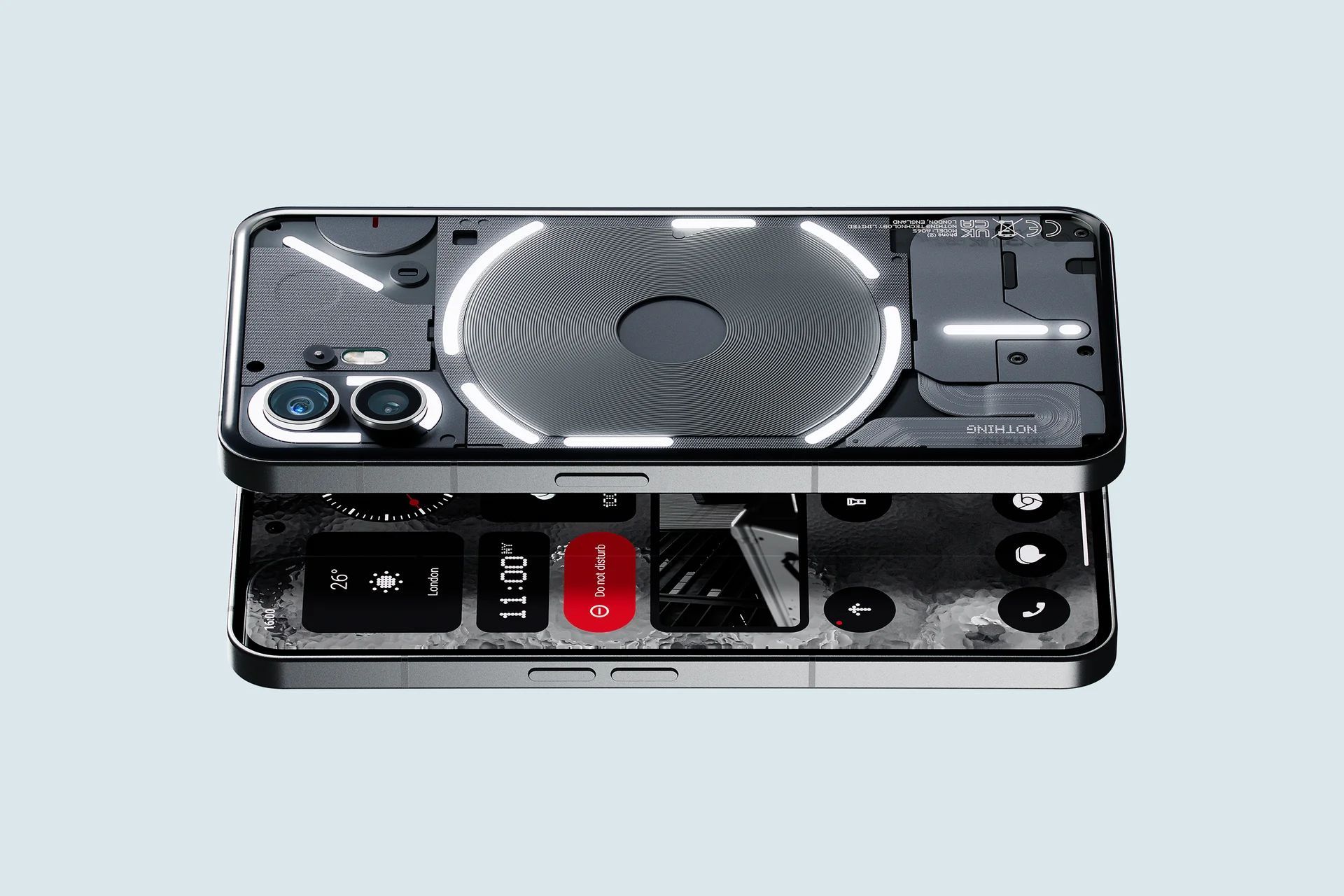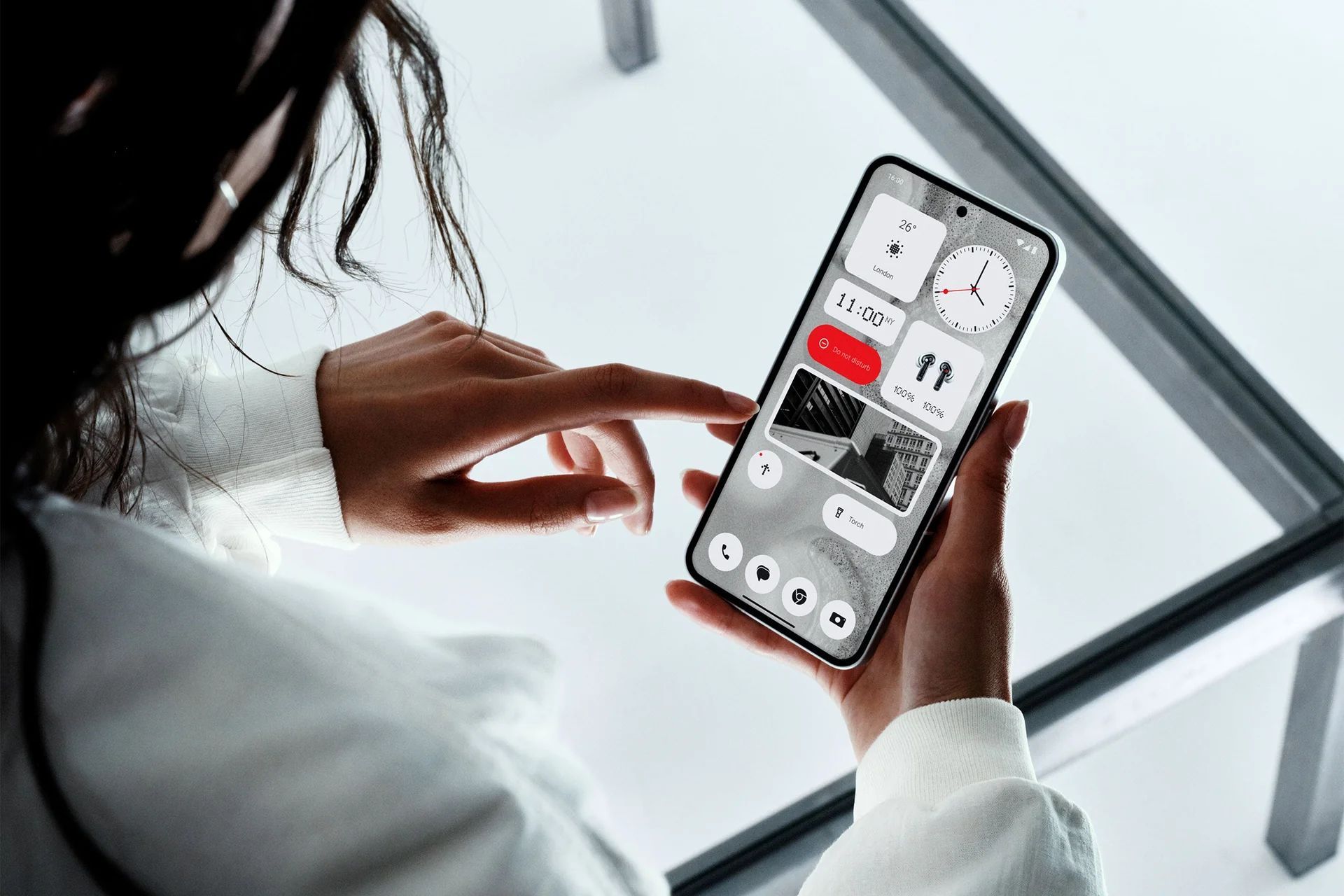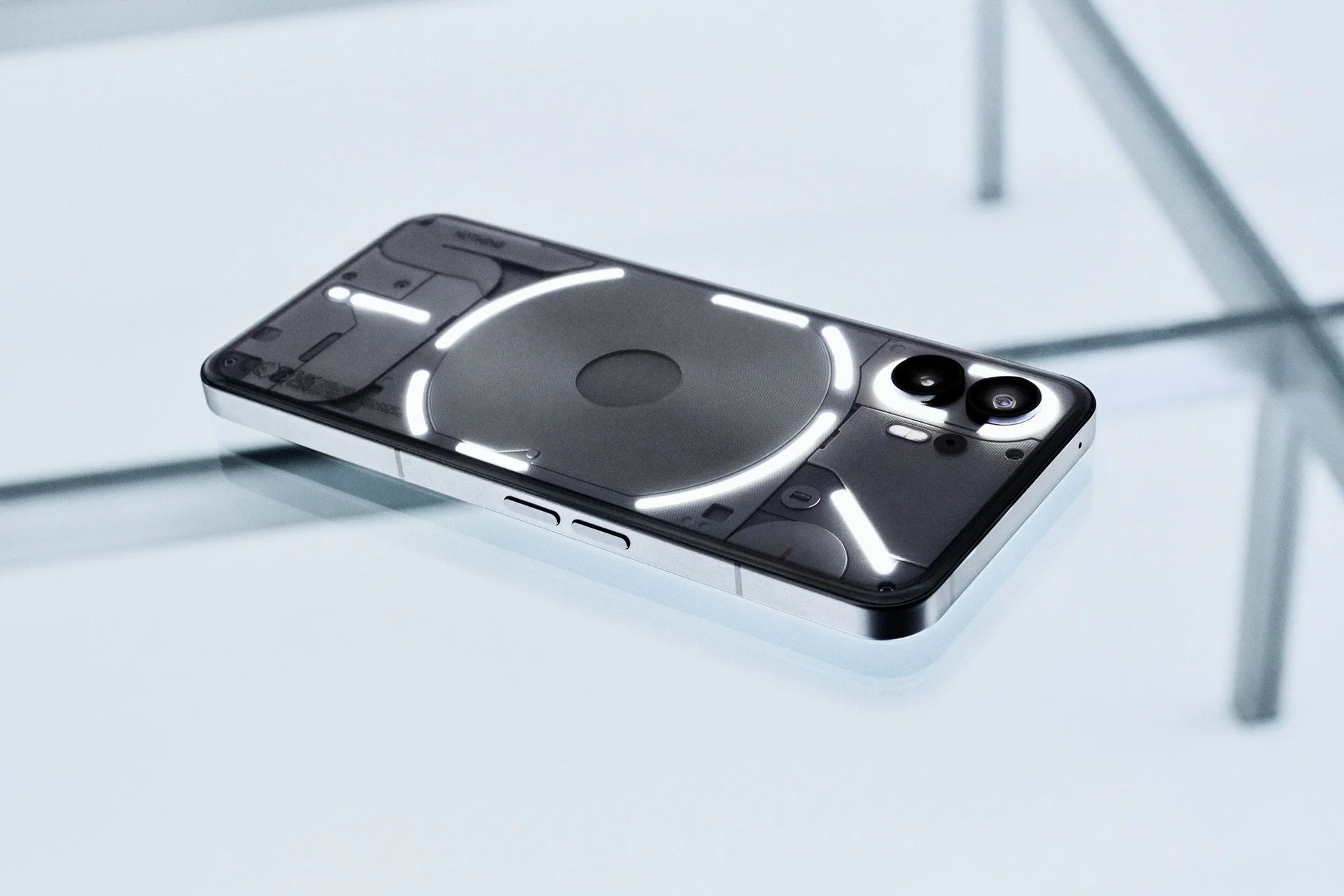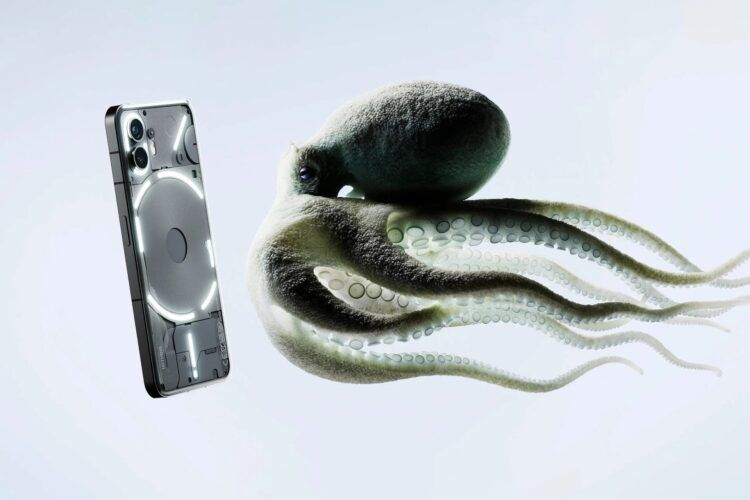Introducing the Nothing Phone 2, the revelation that has arrived amid much fanfare! With the curtain finally lifted, the second installment of Nothing’s Android lineage is now within reach for gadget enthusiasts everywhere.
Resembling its 2022 predecessor, the Nothing Phone 1, the sequel comes with a subtle facelift, but the most remarkable transformations are hidden beneath its surface. We have rounded up all the details you need about this budding flagship from this fresh-faced brand, including its specifications, cost, and where to purchase your very own Nothing Phone 2.
Nothing Phone 2: Specs
Upon initial observation, the Nothing Phone 2 bears striking similarity to its predecessor, the Phone 1, with nuanced design amendments coupled with significant internal enhancements.
Camera
Maintaining consistency, Nothing chose not to tamper with the camera configuration for its sophomore phone. It preserves the dual-lens feature at the rear (wide and ultra-wide) along with a single selfie camera. Nevertheless, two out of these three cameras have undergone substantial internal improvements.
On the rear side, the main wide lens switches from a 50MP Sony IMX766 sensor to a modern and superior 50MP Sony IMX890. While still a mid-range sensor, it promises an all-around enhanced performance. Unfortunately, the other rear lens—the 50MP ultra-wide equipped with a Samsung JN1 sensor—remains untouched. However, the upgraded chipset is expected to deliver improved outcomes, even with the existing hardware (more on this shortly).
As for the selfie camera, it sees a commendable upgrade. The 16MP Sony IMX471 sensor of the Nothing Phone 1 now boasts a 32MP Sony IMX615, expected to deliver superior quality across all parameters. Worth noting is that this sensor supports 1080p recording at 60fps, a feature that was absent in the Phone 1.

Performance
The use of the Snapdragon 778G Plus chipset in the Nothing Phone 1 sparked considerable debate. Despite not being subpar, it was far from being the ultimate performer. This choice perplexed many as the tech-savvy early adopters that Nothing was targeting would undoubtedly lean towards a top-tier processor.
In response to this feedback, Nothing presents the Nothing Phone 2 with the Snapdragon 8 Plus Gen 1 chipset, which reigned as the prime Android processor in 2022. Although the Snapdragon 8 Gen 2 has since surpassed it, it doesn’t render the 8 Plus Gen 1 any less potent.
The shift from the Snapdragon 778G Plus to the Snapdragon 8 Plus Gen 1 will undeniably boost performance. Moreover, it facilitates improved functionalities across the board, such as expedited photo captures, higher-resolution video recording, and enhanced battery life.

Display
The Nothing Phone 2’s display witnesses a myriad of enhancements. To begin with, it trumps the Phone 1’s display size by becoming slightly larger—6.7 inches compared to the predecessor’s 6.55 inches. The position of the selfie camera display cutout has also been recentered from the left.
Switching to an LTPO OLED panel this time, the Phone 2 permits variable refresh rates that can drop exceptionally low, to as little as 1Hz. This means the refresh rate can dynamically switch from 1Hz to 120Hz depending on your usage, a feature that aids in battery conservation. For instance, the display will not refresh 120 times per second if you’re engrossed in an e-book.
Furthermore, the display offers improved brightness, peaking at 1,600 nits, which drastically outshines the Phone 1’s peak of 700 nits.
Regrettably, the protective glass that shields both the front and back of the device remains the same—Gorilla Glass 5, an outdated grade. Premium flagships tend to sport Gorilla Glass Victus at least on the front, but certain compromises were inevitable for Nothing to maintain affordability. For protective measures, consider browsing our selection of the best Nothing Phone 2 cases.

Design
Initially, the Nothing Phone 1 was met with raised eyebrows and comparisons to an iPhone, much to the chagrin of Nothing CEO Carl Pei. Despite his attempts to convince us otherwise, the flat sides, rear camera placement, button design, and antenna layout seemed to mirror Apple’s design ethos.
However, with the Nothing Phone 2, Pei and his team have deviated slightly. The flat sides and antenna layout remain, but it now features a subtly curved back glass. The button and revised Glyph design (the light structure on the phone’s back) make it clear that this device isn’t an iPhone imitation.
Despite criticism over the iPhone resemblance, the Nothing Phone 1 felt like a phone worth twice its price. The Nothing Phone 2 continues this tradition, providing the aura of a device priced well over $1,000, while costing almost half as much.

Battery
Benefiting from a slight size increment, the Nothing Phone 2 houses a marginally larger battery than its predecessor. The Phone 2 is equipped with a 4,700mAh cell, approximately 200mAh larger than the one housed in the Phone 1. Although we have yet to conduct a full test, it’s highly probable that the Phone 2 will deliver similar or improved battery longevity compared to the Phone 1—an upgrade that’s welcome given that the previous phone’s battery life wasn’t particularly noteworthy.
Charging your phone has become more efficient, at least on paper. With a compatible Power Delivery PPS brick, the Phone 2 supports wired charging at 45W, marking a substantial upgrade from the Phone 1’s 33W. However, we will need to verify this claim personally to confirm its veracity—Samsung, for example, has previously overpromised on their 45W charging capacity.
Wireless and reverse wireless charging speeds remain constant at 15W and 5W, respectively.
Notably, just like other flagship smartphones, the Phone 2 does not come with a charger in the box. However, you do receive a unique transparent charging cable, as pictured above.
Glyph
A standout feature of the Nothing Phone series is the light display on the back, dubbed “The Glyph”. In its new iteration, The Glyph gets a slight facelift. It now hosts more LED strips—11 in total, six more than last year—and also more LED “zones”, referring to the number of lights within each strip. A staggering 33 zones feature in this year’s model, a significant increase from the Phone 1’s 12.
Leveraging these additional lights, Nothing offers more nuanced control of the light display. This precision enables the introduction of two novel features: Glyph Progress and Glyph Timer. Glyph Progress allows third-party apps to display progress bars using the lights, with Uber being the first (and so far, only) partner in the US. When booking a car with Uber, the back lights will count down until the driver’s arrival, providing a convenient visual reference of your waiting time.
In a similar vein, the Glyph Timer offers a visual representation of timers, easily accessible via a Quick Settings tile.
As with the Phone 1, the Nothing Phone 2 is available in two color options: White and Dark Grey. It’s worth noting that the Dark Grey shade differs from the Black color of the Phone 1.
Nothing Phone 2: Price and release date
The Nothing Phone 2 was officially unveiled on July 11, 2023, following a prolonged publicity campaign that offered glimpses of the phone ahead of its full reveal. The main detail kept under wraps until the launch livestream was the price.
We now know that the Nothing Phone 2 is priced starting at $599 for the 8GB RAM and 128GB internal storage model. For those requiring more storage space, the 12GB RAM and 256GB storage model is priced at $699. If budget isn’t a concern, you can opt for the top-of-the-line variant, boasting 12GB of RAM and 512GB of internal storage, at $799.
Pre-orders for the phone were made available on the day of its launch, and the device will become generally available from July 17.
As indicated by the US dollar pricing, the Nothing Phone 2 is set to launch in the United States, a contrast to the Phone 1, which had a limited launch in the US. Unlike the Phone 1, the Nothing Phone 2 will be fully functional in the US, supporting all major carriers including Verizon, AT&T, and T-Mobile, and offering sub-6GHz 5G access (note that it does not support mmWave 5G). However, as no US carrier partnerships have been announced, consumers will need to purchase the phone unlocked from Nothing or a third-party retailer and then connect it to their existing carrier account. Carrier partnerships might be a future possibility, perhaps with the Nothing Phone 3 or Phone 4.
As with the US, global pre-orders started on July 11, with general availability commencing on July 17. For Canadian customers, the base 8/128GB model is priced at CAD $929, the 12/256GB variant at CAD $999, and the top-end 12/512GB model at CAD $1,099.
In the UK, the Nothing Phone 2 is priced at £579 for the 8/128GB model, £629 for the 12/256GB model, and £699 for the 12/512GB model. Elsewhere in Europe, prices are set at €679 for the 8/128GB variant, €729 for the 12/256GB variant, and €849 for the high-end 12/512GB model.
The Nothing Phone 2 will also be available in other regions, including India and Australia, with pricing and full availability details to be announced soon.
Featured image credit: Nothing.tech





